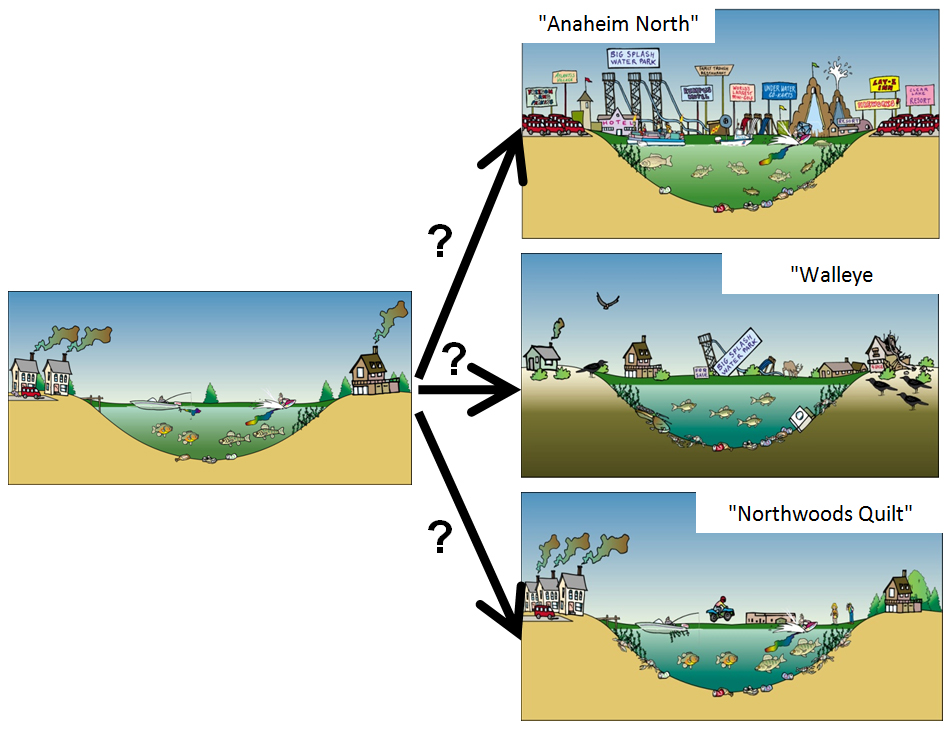Policymakers and resource managers often want scientists to provide forecasts of future conditions. But even when the natural dynamics of a system are well-understood, that may be impossible because trajectories of human activity are unpredictable.
Scenarios offer a way to discuss possible futures that is concrete enough to be useful, without being unrealistically specific. Usually, they are developed through a collaborative process involving many expert perspectives and fleshed out with maps, graphics, and timelines. But producing the scenarios is really only the beginning of a process that continues through public presentations, community discussions, and—often—computational modeling.
Credit: NTL LTER
Combining plausible predictions of human behavior with detailed understanding of ecological processes and long-term data forms a strong foundation for predictive modeling.
Several LTER sites work extensively with scenarios and the 2014 NSF-LTER symposium focused entirely on this often misunderstood tool.
Related stories:











